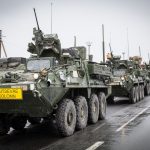SPECIAL REPORTS
Date: 11 February 2019
U.S. Permanent Military Base in Poland: Favorable Solution For the NATO Alliance
This following report captures the idea of a permanent US base in Poland in the geopolitical context, along with its consequences for NATO and Central and Eastern Europe. This paper was supplemented with comments from experts from the United States, Lithuania and Romania to show a broader perspective on the creation of a U.S. permanent military facility on Alliance’s Eastern Flank.
U.S. Permanent Military Base in Poland: Favorable Solution For the NATO Alliance
Grzegorz Kuczyński – Director of Eurasia Program, Warsaw Institute, Poland
Krzysztof Kamiński – President, Warsaw Institute, Poland
- A U.S. permanent military base in Poland will unquestionably contribute to the improvement of the security in the key European region while dramatically increasing the potential for deterring Russia and preventing Moscow from carrying out its hitherto activities. Not only does this translate into a greater protection of the territories of Poland and other countries of NATO’s eastern flank but also those of the entire continent as such undertaking results in a lower probability of an armed conflict. Militarily speaking, even a large U.S. unit is not capable of influencing the current balance of power whilst Russia will be granted a considerable advantage over the allied forces in all countries that would be most exposed to a potential conflict. Though, while envisaging the ongoing state of affairs, even the very presence of U.S. troops is perceived in terms of an important undertaking. Russia will not risk the death of American citizens, though; basically, a permanent U.S. presence will deter the Russians to the greater extent than a rotational one as the former is more resistant to any instances of political turmoil in Poland and the United States.
- The idea of U.S. permanent military base in Poland is also advocated by Lithuania, Latvia, Estonia, Romania, and Ukraine, all of them being most at risk from Russian military aggression. Nonetheless, such countries as Russia and Belarus and most of the Western European states, including Germany, seem rather sceptical or even negative about the plan to establish any U.S. military headquarters Interestingly, the diving line between both supporters and opponents of the U.S. permanent base fairly coincides with the one observed in the case of the construction of the Nord Stream 2 gas pipeline.
- Setting up a permanent military base would be of large geopolitical importance not only for Poland and its bilateral relations with the United States but it would also positively influence the situation in Central and Eastern Europe. In the context of current security ties, it is difficult to talk about purely bilateral cooperation whilst such an alliance should not be opposed to any initiatives taken at a multilateral level. The Polish-American agreement would not impede any NATO structures; quite the contrary, such a deal could potentially strengthen the alliance, complementing multilateral commitments of its allies. Here, two member states conclude a contract supposed to serve the same purpose as the aforementioned multilateral obligations (aiming to stop Russia’s military undertakings), even in spite of any objection from another state, as could be the case of Germany.
- U.S. base will thus reinforce NATO’s eastern flank while providing the United States with both political and economic benefits. First of all, the U.S. permanent military base in Poland will unquestionably bolster the potential for deterring Russia. The fact of deploying land forces to the Polish territory will give a strong signal that the United States respects its allied commitments towards Poland and all European states. Located at the strategic point of NATO’s eastern flank, the permanent U.S. military base in Poland corroborates Washington’s commitments to the Alliance and the fact that NATO is perceived by the Americans as the most important means of ensuring security both for Europe as well as for themselves.
- The U.S. Army facilities will undoubtedly boost NATO’s military capabilities against two major issues, including threats from Russia’s military grouping in the Kaliningrad Oblast as well as the need to safeguard the so-called Suwalki Corridor. The presence of an American brigade in the immediate vicinity of the latter will first enable the allied countries to hold the Russians in check with a threat in the Kaliningrad exclave while providing them with an opportunity to protect the only land connection between NATO member countries (including Poland) and the Baltic States.
- Russia’s violent and hostile reaction to the project is not a surprise, though, neither are threats from politicians and experts that includes a possible nuclear attack. The U.S. base in Poland will neither provoke Russia to conduct any greater invasion against the West nor make it probable to expand the country’s military potential as such a decision had been made before. Some claim that the U.S. permanence presence in Poland is the violation of the 1997 NATO-Russia Founding Act (NRFA), yet it cannot be referred to as an obstacle to set up American facilities on Polish soil. First, Russia has breached the agreement by performing its own actions whilst the Alliance should inform Moscow that such a state of matter does not encompass the arrival of allied forces to Poland under their own flag, which could not take place under the auspices of NATO.
- Even though the U.S. military facilities in Poland may exert an impact on the situation east of the borders of Poland and NATO, they might bring about a serious problem for Belarus. Yet Moscow gains a decisive argument allowing it to urge Lukashenko to let Russian troops enter the territory of Belarus. As illustrated by Russia’s policy, it will become clear that the Kremlin’s pressure to deploy its troops to Belarus may only intensify, regardless of whether any U.S. permanent base is eventually set up in Poland. Over the last few years, Belarus has not made any efforts to keep its political, economic or geostrategic distance from Russia. Lukashenko will therefore eventually agree to establish a Russian base in exchange for some economic concessions and promises of further support from Moscow. Speaking of U.S. permanent military base, it may turn out to be a good solution for Ukraine as the country is currently fighting a war against Russia – just like an increase in the American presence in this region of Europe. The constant U.S. presence in the vicinity of the Ukrainian border may additionally impede invasion plans prepared by Russian generals while Moscow is still considering various force scenarios, as exemplified by the recent tensions in the Sea of Azov.
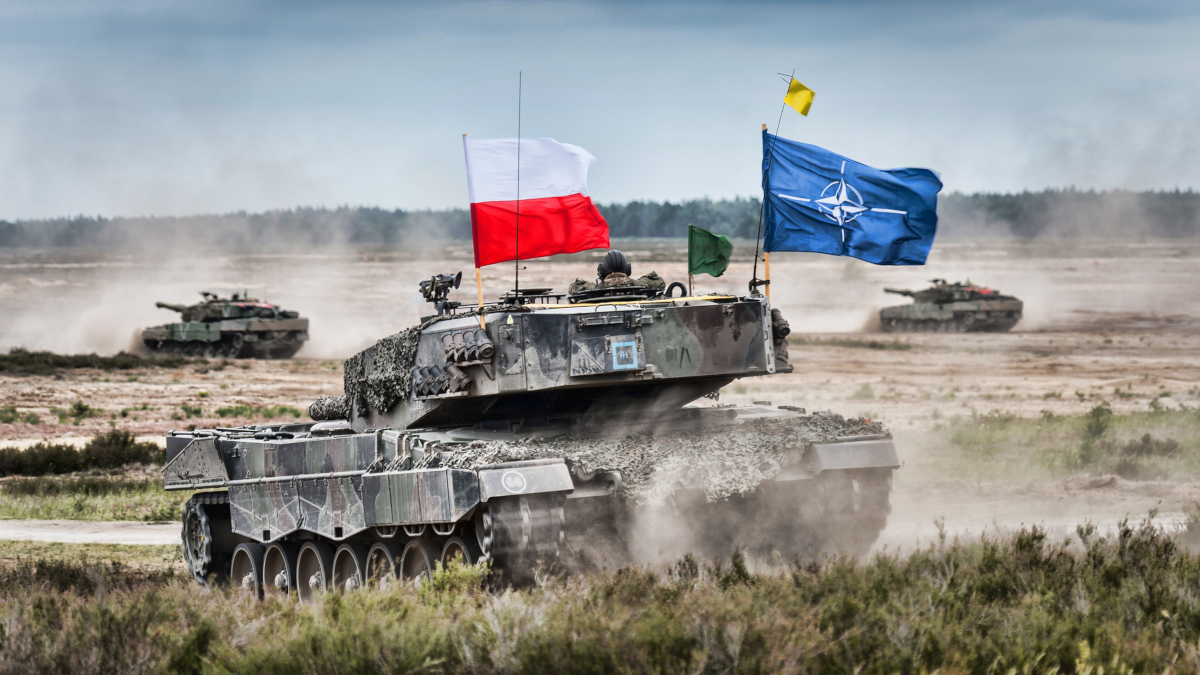 Source: SHAPE NATO
Source: SHAPE NATO
Response to military aggression
For many years, it has been clear that all countries threatened by Russian aggression cannot be fully protected with allied documents, written promises of help or even the expansion of their own defense capabilities. Instead, their security seems best guaranteed by the constant presence of U.S. troops, the more so that Russia is not ruled by a madman who would go on a war with Washington. Any attack on the state where U.S. soldiers have been deployed would potentially serve as a casus belli for igniting an armed conflict. Russia will therefore not dare to attack American soldiers, being aware that such a move could lead to an open clash with the world superpower. The permanent U.S. military facilities are therefore equivalent to a significant reduction in the threat of an aggression as Poland could be then pushed out of Russia’s military reach.
This project constitutes a response to the situation in the west, as Russian President Vladimir Putin was the first one to make a move when expanding his country’s military capabilities in the vicinity of NATO’s borders. The U.S. base will be nothing more than just a response to the current state of affairs, referred to as a defensive step rather than an offensive one. All claims that the U.S. base in Poland will make Putin undertake more aggressive actions as well as develop Russia’s military forces on the western section do not seem particularly accurate as such expansion will take place anyway. The last few years have shown that both inaction and fear of taking some decisive measures make Moscow more prone to take intrusive steps. In addition, Russia has recently aggrandized its offensive military forces westwards. The fact of forming two armies in the western section, both of them fully armed with tanks and missile systems, may eventually lead to strengthening NATO’s defensive potential on its eastern flank.
Similarly, the key problem that underpins the Polish proposal cannot be addressed with significant improvement of logistics and transport capabilities in Eastern Europe that aims to increase the pace of NATO forces movement. As exemplified by Moscow’s hitherto policy, the Russians will start to treat seriously all allied and U.S. commitments to Poland and other countries of NATO’s eastern flank only when American troops are permanently deployed to Polish soil. Yet any promises to displace U.S. forces to Poland in the event of war encourage Russian decision-makers and generals to undertake some intruding measures as Moscow could potentially hope to impede the relief. Russian top officials would probably seek to achieve the goal by exerting political pressure or using military blackmail. Yet it is noteworthy that the Russians are likely to deploy tactical nuclear cargo somewhere on NATO’s eastern flank in order to intimidate Western political elites and public opinion.
The U.S base in Poland would change the military situation both on the NATO’s eastern flank as well as in the Eastern European region while indirectly bolstering Ukraine’s security. Russia is also aware of the fact that the military presence will directly translate into an increase in the U.S. economic and political potential in Poland as well as in the whole region, limiting the scope of Moscow’s ability to meddle with the non-military affairs of Central European countries. Similarly, setting up the U.S. military facilities in Poland, which would additionally strengthen NATO’s eastern flank, will not result in a stronger rapprochement between Moscow and its Chinese partner. This has been decided much earlier. Since 2012, that is the beginning of his previous presidential term, Putin attaches great importance to Russia’s close military cooperation with Beijing, the reason of which was to confront the United States as China’s military ally. It would be extremely naive to consider that the U.S. withdrawal from the idea of building a military base in Poland will make Moscow keep a greater distance from Beijing.
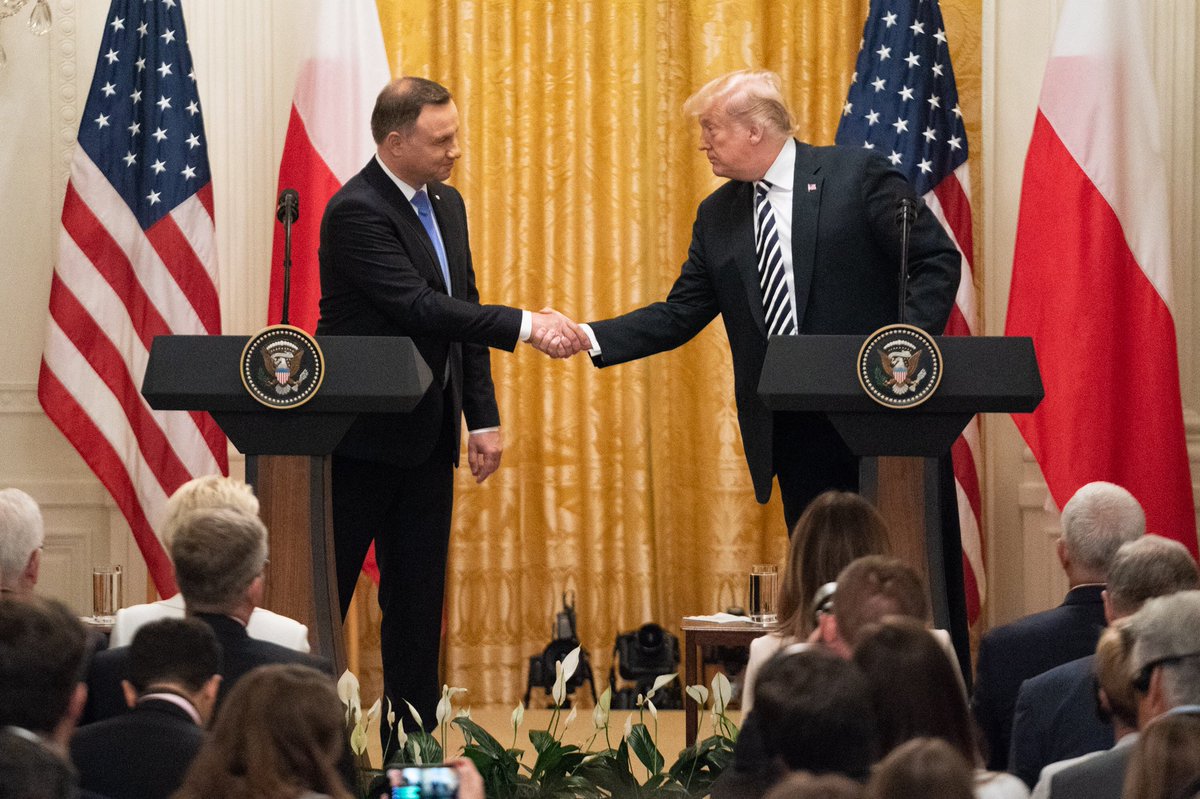 Source: White House
Source: White HouseA more reliable ally
It cannot be said that Poland seeks to make the most of the American presence on its soil while the U.S. Army base is to be the only guarantee of the country’s internal and external security. Poles want and are able to defend their territory themselves. Speaking of defense matters, Poland primarily counts on its own capabilities, as illustrated by the state’s military expenditures, subsequent deals for the purchase of weapons as well as some other undertakings, including the creation of the territorial defense forces and the formation of large units on the country’s eastern border. Under the new government, the potential of the Polish army has increased from 100,000 to 130,000 troops on the active list whereas the figures are expected to reach 200,000 servicemen by the end of 2025. The Polish army is actively involved in the buying new weapons, including the recent acquisition of the Patriot missile system for 4.75 billion dollars. In addition, it has recently been possible to form the fourth division of the country’s land forces. Despite such a significant increase in its military potential, Poland is still in a much worse position in a possible clash with Russia. Therefore it does not come as a surprise that the country seeks to intensify its military efforts with the aid of its ally, backed by Warsaw on the occasion of various military missions. Yet such help did not provide Poland with any particular benefits, as evidenced by the example of the wars in Iraq and Afghanistan. Facing such historical background, Poland has the right to expect reciprocal measures, the more so that all parties will eventually be provided by a number of substantial benefits.
Importantly enough, Poland’s political elites almost unanimously agree to establish a permanent U.S. base. Also, the majority of society is in favor of such a solution. Moscow is trying its utmost to emphasize that any actions undertaken by Poland’s government and the President do not enjoy strong support in the country. Even though if the statement of Andrzej Duda was criticized, it was rather about how the offer was presented to the public and not its substantial content. None of the major Polish politicians criticizes the creation of a permanent U.S. base in Poland. In its turn, the poll commissioned by Poland’s Defense Ministry found that 55 percent of Poles are currently in favor of setting up permanent U.S. military facilities in their homeland, believing that the constant presence of American troops will positively influence the country’s internal and external security. Only 27 percent of Polish citizens are against any U.S. military facilities while 4 percent claim that the permanent presence of American soldiers will lower the state’s protection (as opposed by 56 percent who responded in affirmative)[1]. Poland’s determination is best illustrated by the government’s offer to provide a financial aid of up to 2 billion dollars over 10 years to back the U.S. military presence in the country. Importantly, such sum would not force defense ministry officials to spend funds that had been previously allocated for upgrading military equipment.
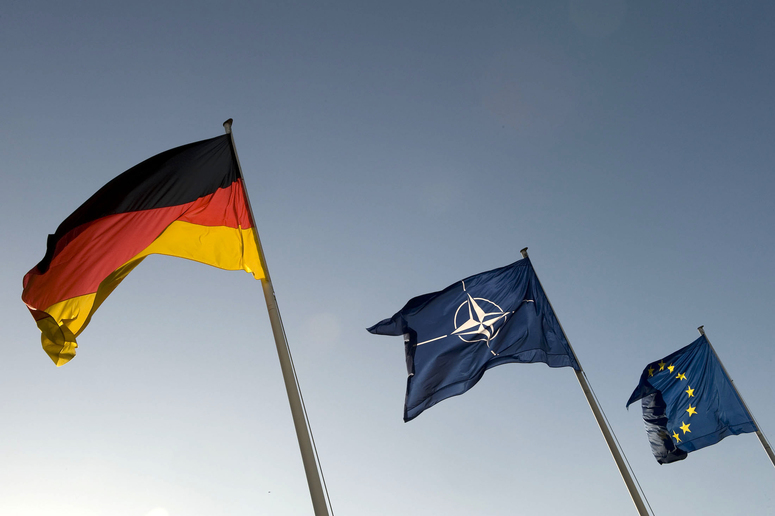 Source: NATO
Source: NATOGerman fears
Some of the Western European countries remain sceptical or even hostile to the plan of establishing a permanent U.S. military base in Poland. For instance, the group of the greatest opponents of the project involves Germany as Berlin is afraid of diminishing its influence in the region and weakening its stance towards the United States. Interestingly enough, the diving line between both supporters and opponents of the initiative base fairly coincides with the one observed in the case of the construction of the Nord Stream 2 gas pipeline.
The Germans fear of Russia’s reaction as the two countries has recently kept intensifying their mutual cooperation. At the same time, they do not intend to lose their hitherto privileges provided by the presence of U.S. military facilities. Therefore, Berlin objects the idea of an American base in Poland, regardless of whether it would be a unit deployed to the Polish territory from Germany or not. Germany refers to purported informal agreements inked with Russia in the 1990s, under which the West had committed not to deploy Allied bases in these countries while Moscow had raised no objections against the admission of Poland and the Baltic States to NATO structures. According to German opponents of the project, the countries do not dispose of adequate infrastructure, yet in fact, the criticism of new U.S. base derives also from Berlin’s ever-increasing belief that Europe should no longer fully rely upon the U.S. aid as it needs to develop its own military forces.
After the Second World War, U.S. military bases in Europe served two predominant purposes. First, they constituted a barrier against a possible Soviet offensive while, secondly, their ultimate aim was to stop Germany’s militarist ideas, which had previously led to the outbreak of great conflicts, two of which involved the engagement of the United States. Though the latter reason seems no longer valid as Berlin is currently outlining its most pacifist views in history, as evidenced by the recent measures undertaken by both German elites and society. The country is now willing to conduct the economic expansion even though it does not spend the demanded 2 percent of its GDP on defense expenditures. This ratio is unlikely to change in the foreseeable future, especially bearing in mind the attitude of German society and plans to take advantage of this fact by some politicians, with particular regard to those of left-wing political groups. Germany’s defense spending is among the lowest in Europe while the army’s operational readiness should not even be discussed in the following report. According to a poll, 42 percent of Germans say they want U.S. troops out of the country, compared with 37 percent who want[2] military personnel to stay. Only 40 percent of Germans are in favor of deploying their army in order to defend another European country against Russian aggression. In the United States and Poland, this indicator amounts to 62 percent.
Also, the first reason for the American presence on German soil has ceased to be valid. A potential frontline in the event of a NATO-Russia war runs far to the east of the German borders. The German sense of security is also due to the lack of a visible Russian threat, making Berlin the least keen to defend its eastern allies against Russian aggression. If the Russians sought to carry out an unexpected attack and seize control over the Baltic States, putting NATO in front of a fait accompli, they would be able to do it without much effort. Before any large U.S. unit would be dispatched from Germany to the front, it would be already too late to conduct any complimentary actions, also because the number of American forces in Germany is much smaller than it used to be, dropping to 35,000 from as much as 250,000 in 1985. So why would America need 35,000 servicemen in the country that would like to push them out of its borders and that keeps sealing deals for Russian gas supplies, thus making it dependent on Moscow’s aid?
Euro-Atlantic unity
However, the Americans need to take into account the opinion of both Berlin and other European capitals, also those being against ideas put forward by the Polish government as Warsaw’s initiative may introduce some changes to the NATO system. Critics have already pointed out that Washington-Warsaw bilateral agreement, which excludes the participation of other allies, may give a strong signal that the United States seeks to distance itself from maintaining a stable and uniform military bloc (critically assessed by President Donald Trump) while favoring bilateral alliances with the most loyal states. It is probable that Moscow will employ this tool to pose a threat to the “old” Europe while Poland may be ultimately depicted as a country that seeks further confrontation. When discussing the permanent U.S. base project, the Russians may intend to achieve their strategic goals, namely to soften the EU’s current stance on economic and political sanctions. In this context, any feasible Polish-American agreement could hardly come as a complete novelty as bilateral deals on deploying U.S. troops have already been signed by other NATO countries, including Norway and Greece. The former has recently negotiated an increase in the American contingent, which will also be the case in Germany. Therefore, all bilateral agreements and cooperation with the United States fit into the Alliance’s current scheme as the presence of U.S. troops has no intention to serve only one country, aiming rather to bolster NATO’s combat readiness. Notwithstanding that, the main purpose is to enhance the Alliance’s defense in Europe, as mentioned in the U.S. Senate report on the National Defense Authorization Act (NDAA)[3]. The new project would be part of the wider process of expanding the American military presence in Poland. After all, the U.S. Army is currently involved in constructing an anti-missile defense system in the Polish town of Redzikowo. As many as 3,000 American troops are garrisoned in the western town of Zagan where they are being trained on a rotational basis as part of the armored brigade combat group. Almost 1,000 U.S. soldiers were deployed to Polish towns of Orzysz and Bemowo Piskie within the framework of a multinational NATO battalion program.
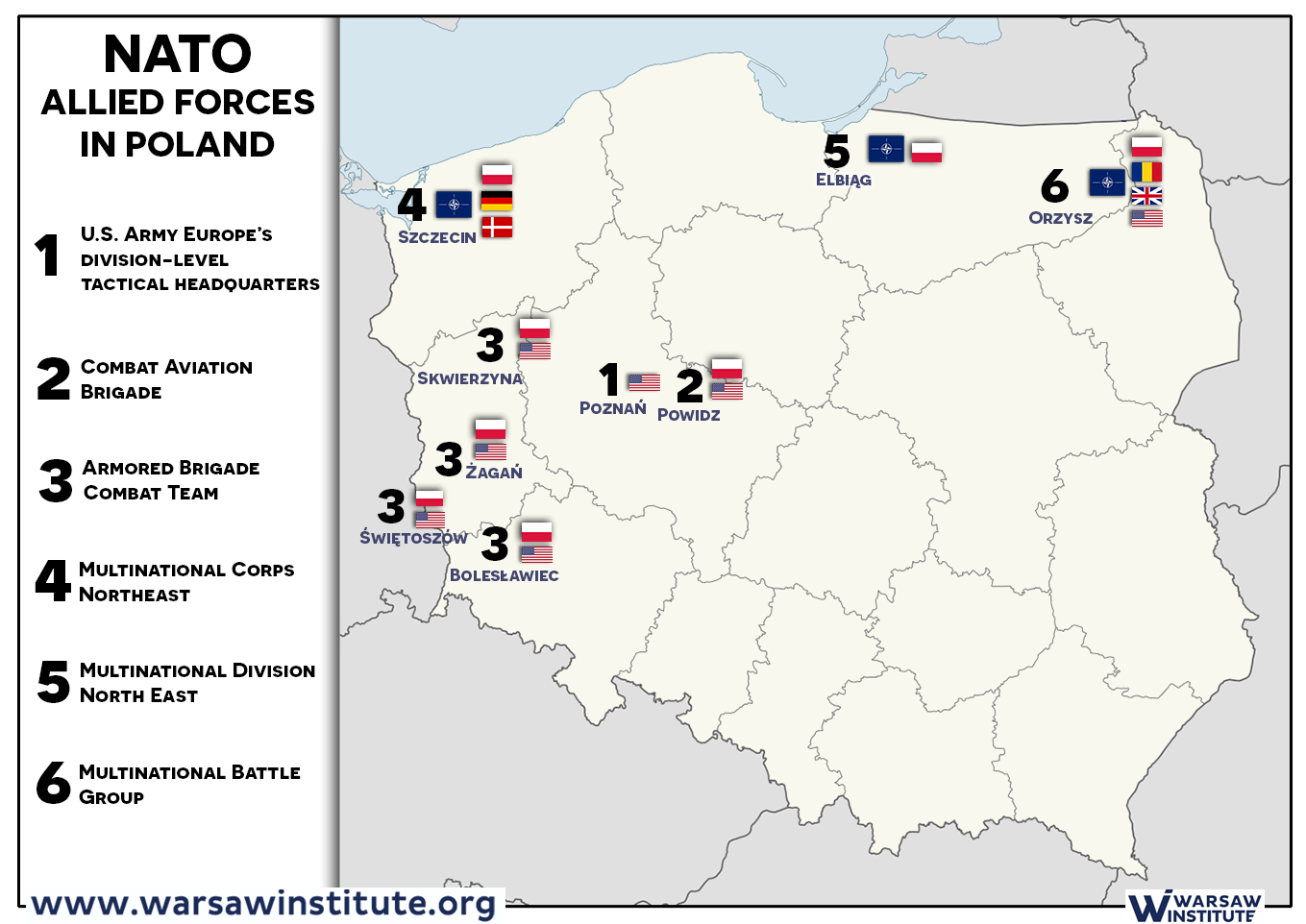
An increased presence of U.S. forces in Poland would result in greater credibility and effectiveness of NATO’s deterrence and defense missions on the Alliance’s eastern flank, constituting thus its integral part. This would aim to safeguard security in the region as well as protect the Alliance while bolstering its political coherence and military effectiveness. Not incidentally, the idea of the permanent U.S. presence in Poland was backed by Lithuanian Defense Minister Raimundas Karoblis, who stressed that such a step “would substantially enhance NATO’s deterrence and defense posture and is therefore very much in line with Lithuania’s security interests.” The states that later joined NATO structures do not want to be categorized as “second-class” member countries to which distinct security requirements apply. Unfortunately, some “first-category” states keep behaving as if they sought to maintain the hitherto state of affairs.
Poland’s proposal takes on a new importance in the light of the idea of forming a “European army”, put forward by French President Emmanuel Macron and backed by German Chancellor Angela Merkel. Interestingly, such a military unit could be founded regardless of all existing U.S.-European alliances. Bearing in mind the relations between some large Western European states – with particular regard to Germany – and Russia, and an ever-growing crisis between the so-called “Old Europe” and the United States, it comes as a surprise that Warsaw keeps recognizing its alliance with Washington as the most reliable manner to safeguard its security. So if it is to be allegedly recognized that an American military base may harm the unity of Euro-Atlantic defense, what the Macron’s idea can be referred to as? The U.S. military facilities aim to reinforce the Euro-Atlantic ties while the European army may contribute to their gradual impairment.
Poland’s attempts to protect the American military facilities, which translate into the actual shift of the NATO border a thousand kilometers to the east, seem to arouse concerns of some allies, who are afraid of exacerbating its ties with Moscow. Russia would consider the U.S. permanent base as a breach of the 1997 NATO-Russia Founding Act, though this has no major significance. It is not only due to the fact that Moscow was the first to violate the provisions of the deal, as illustrated by the statement of Polish Foreign Minister Jacek Czaputowicz, who claimed that “one cannot break what is already broken.” Furthermore, it is also because that the rotational presence of NATO troops in the countries of the former Eastern bloc was considered as a breach of the 1997 deal.
Some claim that the West, unlike Moscow, should not violate bilateral obligations while demonstrating its moral superiority. This makes neither political nor military sense, though, and will not change Russia’s approach, making Western countries less powerful and giving the Kremlin more reasons for taking any further intrusive steps. Still, there is no use in sticking to the rules of the games when the rival keeps disregarding them in an overt manner, in fact introducing its own principles. Most Western European states keep expressing the very same strong conviction, to a large extent rooted by Moscow’s agents of influence and probably dating back to the Cold War period, according to which one should not poke the Russian bear. Some pundits, political writers, and politicians consider the alleged fears of the Russians as much more important than the real needs of the allied nations of Eastern Europe that had been given to Stalin at the Yalta Conference, which resulted in many decades of the painful communist regime and Soviet domination.
NATO’s reinforced military presence on the Alliance’s eastern flank (in the form of so-called multinational battalions) constitute a response to Russia’s violation of international law. Importantly, such actions as Moscow’s annexation of Crimea or the occupation of a part of Ukraine’s Donbas region were not the last ones as the Kremlin still undertakes aggressive measures against the West, as exemplified by the attempted poisoning of Sergei Skripal or other military intelligence operations. Some small NATO garrisons, deployed to Eastern Europe after 2014, are no longer able to protect the region. For instance, Russia’s intentions were clearly depicted during the Zapad 2017 military drills. And yet Russian officials keep uttering direct threats, examples of which could be traced back to 2015 when Ambassador to Denmark Mikhail Vanin and Deputy Head of the Russian Security Council Yevgeny Lukyanov warned against a missile attack targeted towards all countries that would install a U.S. anti-missile shield on their territories, including Denmark, Romania, and Poland respectively. It should be yet again emphasized that the plan to set up U.S. military facilities in Poland is of a purely defensive nature and constitute a natural response to Russia’s aggressive steps to the same extent as the aforementioned anti-missile shield. The fact of dispatching an American military unit to Polish soil will not introduce any radical changes to the region’s balance of power, given the sizes of the Polish army and Russian forces stationed on the western borders of Russia. Nevertheless, this idea met with an extremely harsh reaction from the Kremlin, which seems to corroborate the Russians’ conviction that, despite their previous declarations, it is not about Western countries’ plan to attack Russia but rather to protect their territories from a potential invasion.
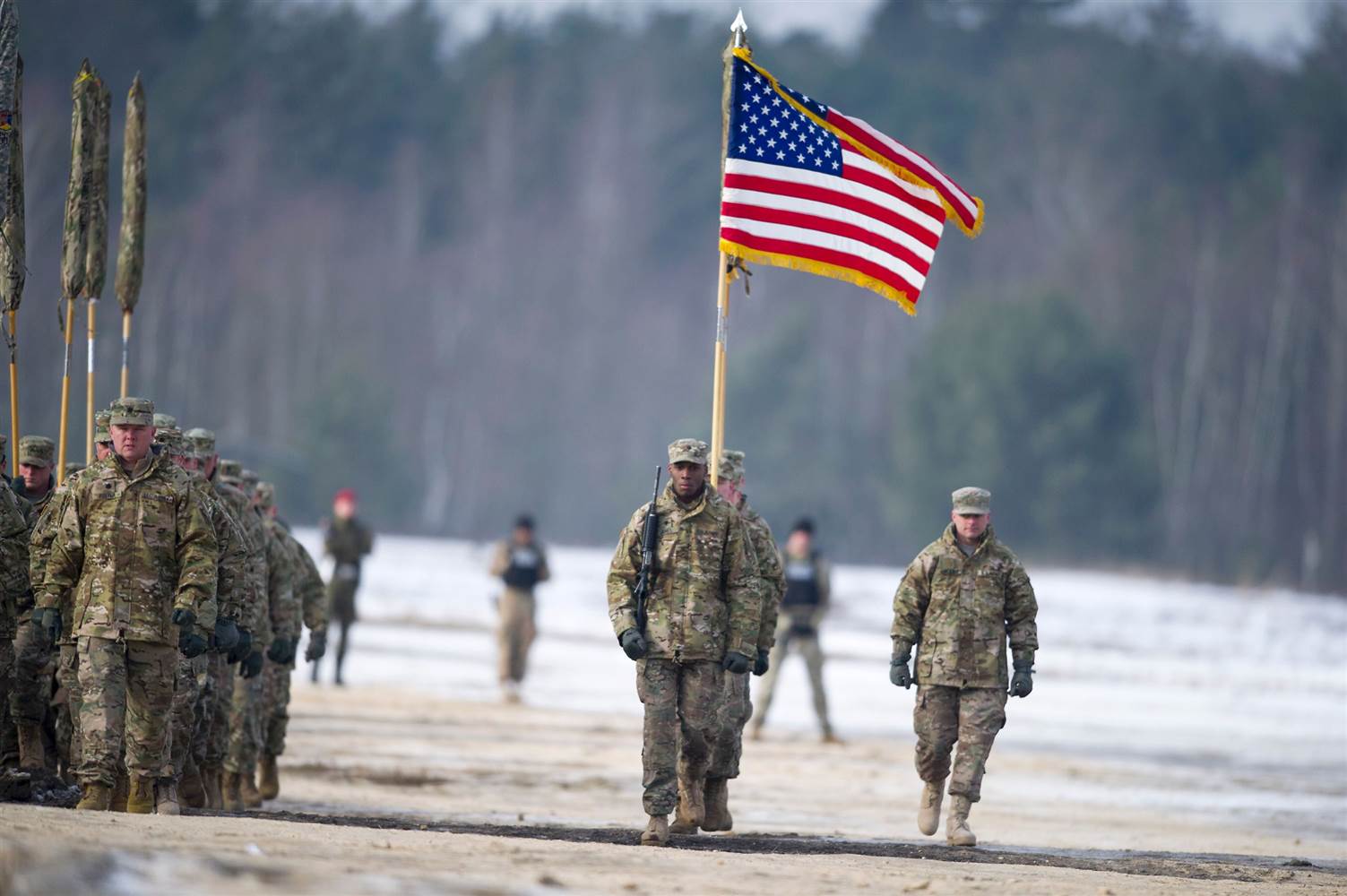 Source: NATO
Source: NATOBenefits for the United States
In response to Warsaw’s demands, the fact of establishing a permanent military base in Poland would give a strong signal for all U.S. allies not only in Europe but also all around the world. For Washington, there is no better way of proving that it pays off to meet allied commitment as they ultimately result in receiving substantial and long-lasting U.S. aid. First of all, Poland intends to cover most of the operational costs of U.S. bases from its own pocket. Secondly, the country spends 2 percent of its GDP on defense, which should be the case of all NATO members, though only a minority fulfills such a commitment. Not to mention that the government in Warsaw seeks to purchase modern weapons and military equipment, mostly the American ones.
The U.S. Army disposes of military facilities in many places around the world, yet it is often expected to pay for their maintenance. Not incidentally though, the Trump administration should consider Poland’s readiness to contribute to the U.S. base’s operational costs as a crucial argument for deploying a garrison to Polish soil. The permanent presence of the state’s troops on the territory of America’s close ally should convince the U.S. public opinion, especially given that Poles are keen to bear all expenses. In such a way, the fact of backing the project should not entail any political risk for U.S. congressmen, even while envisaging an argument, according to which the rotational presence of U.S. troops in Poland is more costly than their permanent deployment, co-financed by the Polish authorities. In a long-term perspective, it will be possible to save some substantial sums of money if such an armored brigade is eventually dispatched to Poland as it will be not needed to construct an entire military town, modeled on the German ones. Once both countries (including Poland’s financial aid) commit themselves to dispatching all necessary equipment, improving transport infrastructure and creating an accommodation and training base, the mere exchange of soldiers would require less funds than a rotational shift of an entire unit, along with its military machines and supplies, as it tends to take place now. Speaking of the U.S. financial benefits to be brought about by the project, one should also take into account mutual armaments cooperation. Not incidentally, at the meeting with U.S. National Security Advisor John Bolton held during one of his visits to the United States, Polish Defense Minister Mariusz Błaszczak broached the subject of further purchases of U.S. military equipment by his country when discussing the deployment of American troops to Poland. Thus, Washington’s consent to send an armored brigade on a permanent basis might exert a positive impact on Polish-American negotiations on the acquisition of U.S. weapons.
When making a decision to set up a permanent military base in Poland, the American leader would prevent his critics from putting forward an argument that he had been pursuing an isolationist policy. Simultaneously, it would no longer be possible to accuse Trump of pro-Russian sympathies. Instead, the U.S. President might show his commitment to America’s allies while Russia could be portrayed as a genuine opponent for the country, as included in the U.S. National Defense Strategy, adopted by Donald Trump. The document classified China and Russia as revisionist powers, placing the United States as their main competitor. The proposal to establish a permanent military presence in Poland is therefore in line with the provisions of the paragraph stating that, according to the U.S Senate, the U.S. policy needs to provide an integrated approach to the strengthened defense of European partners and allies by deploying U.S. forces in order to deter and, if necessary, to counter Russian aggression.
U.S. Congressmen and Senators raised the necessity of permanent U.S. presence in Eastern Europe immediately after Moscow’s annexation of Crimea. Such an offer was first put forward by Eliot Engel, a Democrat Representative who served as the Deputy Chairman of the House Foreign Affairs Committee. His stance was almost immediately supported by the Republican Senator John McCain. Back in 2014, the United States launched an initiative to increase the military presence in Europe (within the framework of the European Reassurance Initiative, ERI)[4], a part of which is the Atlantic Resolve Operation aiming to safeguard both rotational and permanent deployment of U.S. forces, also to the regions where they had stationed before. This was the basis of dispatching the U.S. Army Armored Brigade Combat Team to Poland in early 2017. On May 24, 2018, U.S. General Curtis Scaparrotti declared he was seeking more troops, equipment, and weapons to be sent to the Old Continent so as to maintain America’s military superiority and deter Russia, considered as the U.S. Army’s predominant task in Europe.
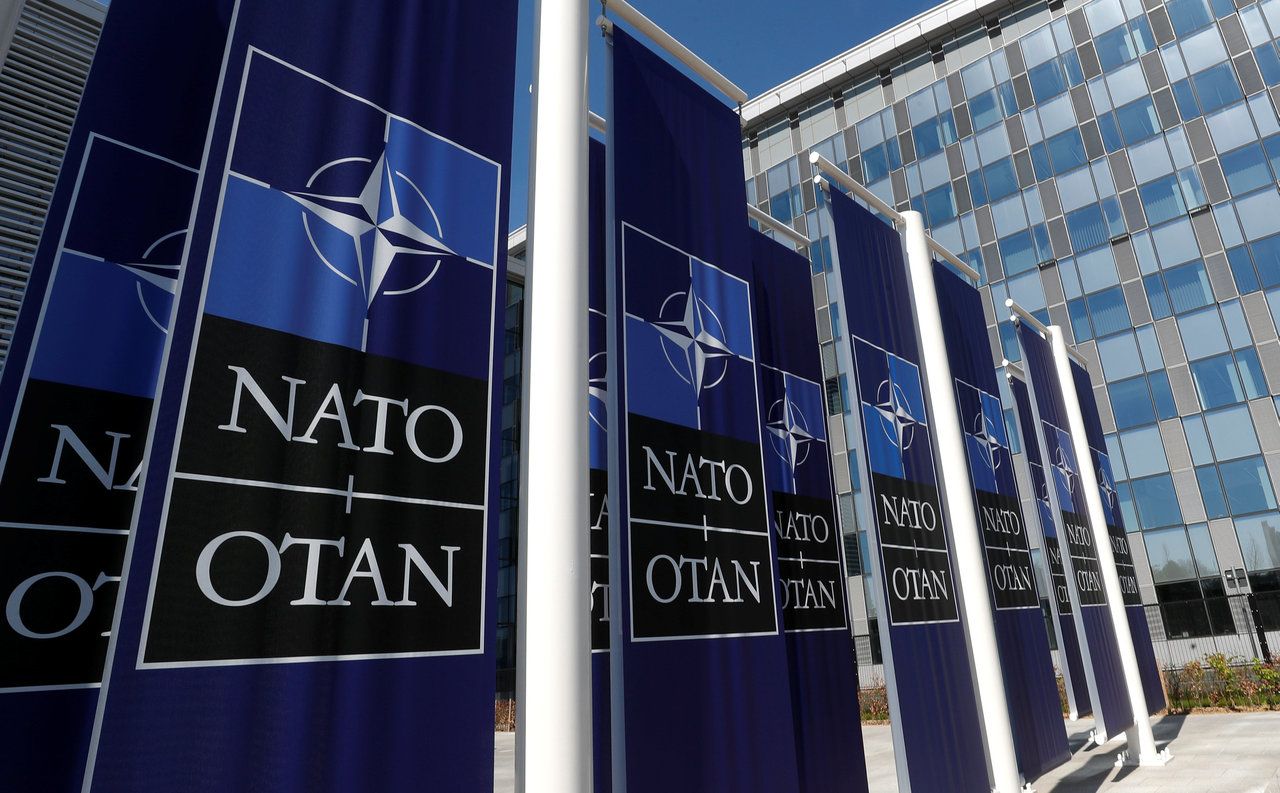 Source: NATO
Source: NATOA pragmatic solution
One of the main arguments against setting up a permanent base in Poland would be the fact that its military personnel would be transferred directly from the United States, instead of dispatching servicemen from any other U.S. military facilities in Europe or in the world. Yet not all Pentagon officials seem convinced whether it will be necessary to boost U.S. military involvement in Europe while many American generals consider China, and not Russia, as the country that poses a greater threat to the United States. The rotational presence of the U.S. troops on NATO’s eastern flank will enable to no longer send military units there, dispatching them to the Far East instead. A permanent base may come as an inconvenience, all the more so that soldiers from a particular American state would be stationed there, which would result in diminishing available reserves in the event of a clash in the Far East, particularly with China. There still remains one more question related to this issue. In the case of an armed conflict in Asia, more attention is traditionally drawn to the fleet and air forces while the war in Europe would rather involve the use of land forces, including armored ones. And here the question arises again: what kind of army section should be invested to a greater extent? Yet the query may turn out not to be valid anymore. The Pentagon should take into account the ever-increasing partnership between Russia and China, also in terms of economic affairs, especially bearing in mind the growing risk of a war on two fronts. And even if Moscow does not decide to stand alongside Beijing during a regular fighting in Asia, the U.S. involvement in the Far East is likely to employed to achieve certain goals in Europe, as exemplified by such scenarios as the break-up of Ukraine, the annexation of the Baltic States or even the plausible attack on Poland. They might be depicted as local operations in order to hinder the solitary European part of the Alliance from conducting military activities. While envisaging such likelihood, the mere permanent presence of the U.S. Army on Polish soil may at least prevent Russia from showing aggression against the NATO’s eastern flank.
Opponents of the project have pointed to serious transport infrastructure issues in Poland. Speaking of the U.S. Army, it does not dispose of a complete freedom of movement in Europe. Taking into according to the Alliance’s commonly known problems with NATO’s rapid military response to Russian aggression, which are mostly due to the reaction time, the permanent presence of American military units may constitute a solution to this issue. There is no point in puzzling over how to rapidly dispatch the rescue to the spot as the relief will be already sent to a correct location. According to the adversaries of the project, the dislocation of U.S. forces in Poland is equivalent to their introduction into the range of Russian missile weapons. And how the shift to the relief area could be referred as to in the event of an armed conflict? In fact, the permanent U.S. military facilities in Poland might save many lives in the case of a potential war. Everybody seems to be aware of the fact that Russia is trying its best efforts to develop its ability to prevent hostile forces from entering the warfare theatre, an example of which is the anti-access/area denial strategy or A2/D2. If the Kremlin makes a decision to attack Poland or the Baltic States, it will possibly employ all the resources of missile weapons, long-range artillery, and air defense systems with the aim of making it extremely difficult for the NATO forces to provide substantial help to the front countries.
Furthermore, the U.S. Army is likely to suffer greater losses during transport to the conflict zone than during the fight. Bearing in mind Russia’s A2/D2 strategy, with particular regard to missile, anti-aircraft, anti-ship and electronic warfare weapons in the Kaliningrad Oblast, the U.S. Army, in order to minimize all potential losses in personnel and equipment, may find it much more profitable to have its military units in the conflict zone rather than to deploy them to the spot right after the outbreak of war.
The argument that a permanent U.S. base in Poland will strengthen the “anti-liberal forces” in Europe seems as relevant as the claim that such military facilities bring substantial benefits only to the American President. Citizens of all democratic countries are entitled to change the authorities if they feel such a need. Therefore, the potential U.S. military base can be neither perceived as the achievement nor the failure of Polish and U.S. current political elites. The American troops’ permanent presence on Polish soil is referred to as a strategic issue that goes far beyond the limits of the rules of individual political teams in both Washington and Warsaw. Thus, this is first and foremost the common initiative of Poland and the United States and not the one put forward by the Law and Justice government and the Trump presidential administration. Critics of the idea of a permanent base claim that in the event of an armed clash, it would make no difference whether troops from a rotational or permanent unit were deployed to fight against the enemy. Yet the U.S. permanent military presence should serve another purpose, assuring the Polish side that the Americans would have no intention to make any sudden decisions to withdraw their troops, for instance, due to the changes in the White House’s foreign policy or the need to cut costs. The current rotational U.S. military presence is not efficient enough to deter Russia, though.
Kaliningrad and Threats
Russian Defense Minister Sergei Shoigu declared on October 24 that Poland’s plan to permanently host a U.S. army division would affect regional stability and trigger a Russian response. Shoigu said at a joint board meeting of the Defense Ministries of Belarus and Russia that Moscow “will have to take retaliatory measures and be ready to neutralize any possible military threat in all directions.” Russia perceives the project in terms of the strengthening of NATO’s eastern flank and an increase in the U.S. military presence in the region. Asked about a U.S. base in Poland, Kremlin spokesman Dmitry Peskov said it was every country’s sovereign right to take such decisions while warning that Moscow was ready to react to NATO’s infrastructural expansion towards Russia’s border. In his turn, Russian Deputy Foreign Minister Alexander Grushko declared that the deployment of the U.S. military headquarters to Poland would force Moscow to “adopt additional military and technical measures” to ensure Russia’s security. He did not specify any details, though. In some press interviews, Russian military experts claimed that their country, facing a potential armed conflict with NATO or the United States, might “neutralize” the base with the use of Iskander tactical ballistic missiles and Kalibr and Onyx cruise missiles. The former are located in the Kaliningrad Oblast while the latter are owned by Russia’s Baltic Fleet. Russian propaganda points to the allegedly poor awareness of Poles that the creation of such a base will automatically make their homeland the primary target for Russian missiles.
Nonetheless, as for the Russian point of view, the threat linked to the deployment of the U.S. base in Poland is more of a political rather than military nature. For Moscow, the greatest problem that emerges from the permanent U.S. military presence on the Polish territory will be an increase in American influence on Europe’s internal affairs while Poland would be poised to strengthen its position of the region’s leader becoming one of the EU’s important players as the U.S. key European ally.
Such a turn in the regional policy could be due to Turkey’s retreat from NATO and Britain’s divorce from the European Union. In this context, it is vital to interpreting all Russian statements, according to which Poland’s plan will result in Europe’s decreased security, posing most serious threat to the Germans and the Hungarians while leading to the partition of Ukraine and the creation of Russian bases in Belarus. At the same time, Russian propaganda seeks to point out that the United States is more important to Poland than the European Union.
Furthermore, Russian experts keep bandying about yet another argument, namely that Poland’s decision to host a U.S. base will make the country give up its military sovereignty, being an inherent part of the state’s autonomy. Some Russians even claimed that the establishment of a military base sought predominantly to fulfill U.S. military orders whilst the current government could be easily referred to as “American governors”. It is essential to notice such absurd claims seem extremely widespread also among Russian politicians. This is part of a Kremlin-endorsed concept, according to which the United States was getting ready for a potential war with Russia while a “strike group” was to be formed in Poland and the Baltic States. Naturally, similar reports are an absolute nonsense as the permanent presence of even one U.S. unit cannot be considered as a large offensive force.
Moscow is likely to take advantage of the U.S. base, not to mention discussions around the project, as a pretext for further expansion of the state’s military potential in the Kaliningrad Oblast. Meanwhile, it must be made clear that the U.S. base constitutes the answer to armaments in the Kaliningrad exclave and not the other way round. Permanent facility is a response to the ever-growing number of increasingly dangerous weapons deployed to the Kaliningrad Oblast to the same extent as to the Kremlin’s aggressive and hostile policy towards the West.
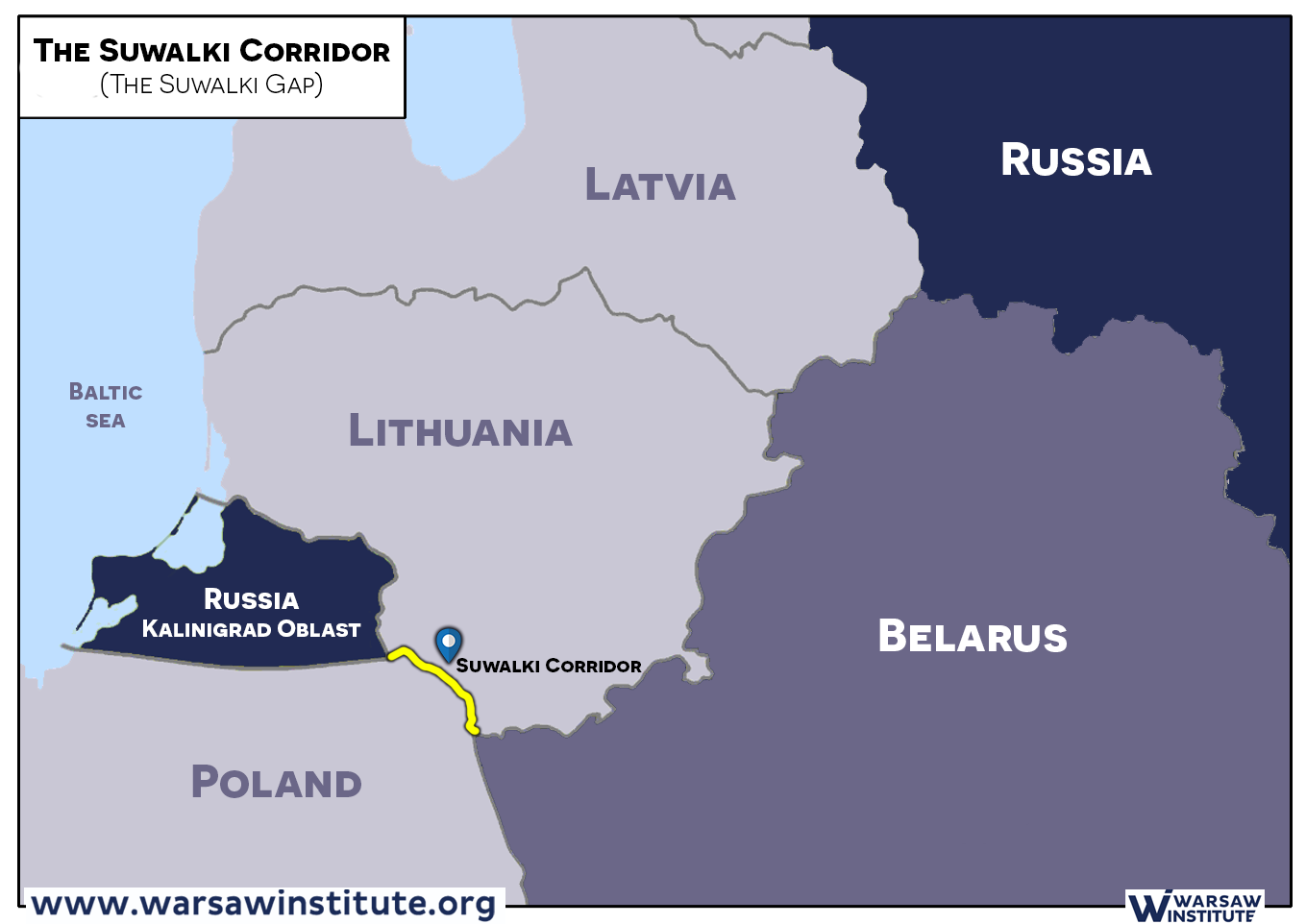
Even though the exact number of Russian troops in the exclave remains unknown, it is said to exceed a dozen thousand people, not to mention the existing possibility of deploying a few thousand more in the event of war. However, the Kaliningrad Oblast is not tasked with any offensive operations. The main responsibility of the Russian military unit stationed in the Kaliningrad exclave is to paralyze NATO forces’ activities, including aid for the Baltic States and Poland. The region was fully equipped with such military systems as Iskander short-range ballistic missiles, S-400 missile batteries as well as Bal and Bastion coastal missiles of a range covering the province’s territory. This is mostly about the Suwalki Corridor, a short stretch of territory between Belarus and the Kaliningrad Oblast, being the only land connection between Poland and the Baltic States. It is noteworthy that the Kaliningrad-based Iskander missiles may be employed by the Russians to scare Poles while posing the threat to the U.S. base. This year, Russia deployed Iskander-M missile systems (NATO reporting name: SS-26 Stone) in the Kaliningrad region permanently. The units were received by the 152nd Guards Missile Brigade. The range of missiles, which may be fitted with a nuclear warhead, covers practically all Poland’s territory. This year’s reports about modernizing nuclear arsenal-related facilities in the Russian exclave of Kaliningrad may appear somewhat disturbing. According to the satellite imaginary, Russia has expanded its nuclear weapon bunker in the town of Kulikowo located 50 kilometers far from the Polish border. Modernization works started in 2016. The new satellite images showed Russia appearing to upgrade four of its military installations in Kaliningrad, including a nuclear weapons depot. In addition, aerial pictures showed 40 new bunkers under construction near the city of Primorsk. Russia’s Defense Ministry confirmed reports on a complete upgrade of the Chkalovsk air base. In addition, according to some documents published by the Ministry, Russia plans to deploy Samarkand electronic warfare systems in the Baltic Fleet’s facilities in the Kaliningrad Oblast. Facing a potential armed conflict in Russia, NATO should first and foremost try its utmost to neutralize the Russian army unit while a U.S. armored brigade, if dispatched to the region, might give Russian generals sleepless nights.
Russia has already launched multiple measures aiming to torpedo the project of permanent U.S. base, employing chiefly information warfare techniques. If the U.S. base were to be hosted by Poland, Russian activities might dramatically intensify while information warfare would be additionally accompanied by some active means. They would target the base, along with its personnel and the immediate vicinity. On the one hand, the Russian intelligence service will collect data about the facility while igniting tensions between Americans and Poles on the other. Similar measures have been employed by Moscow in Lithuania.
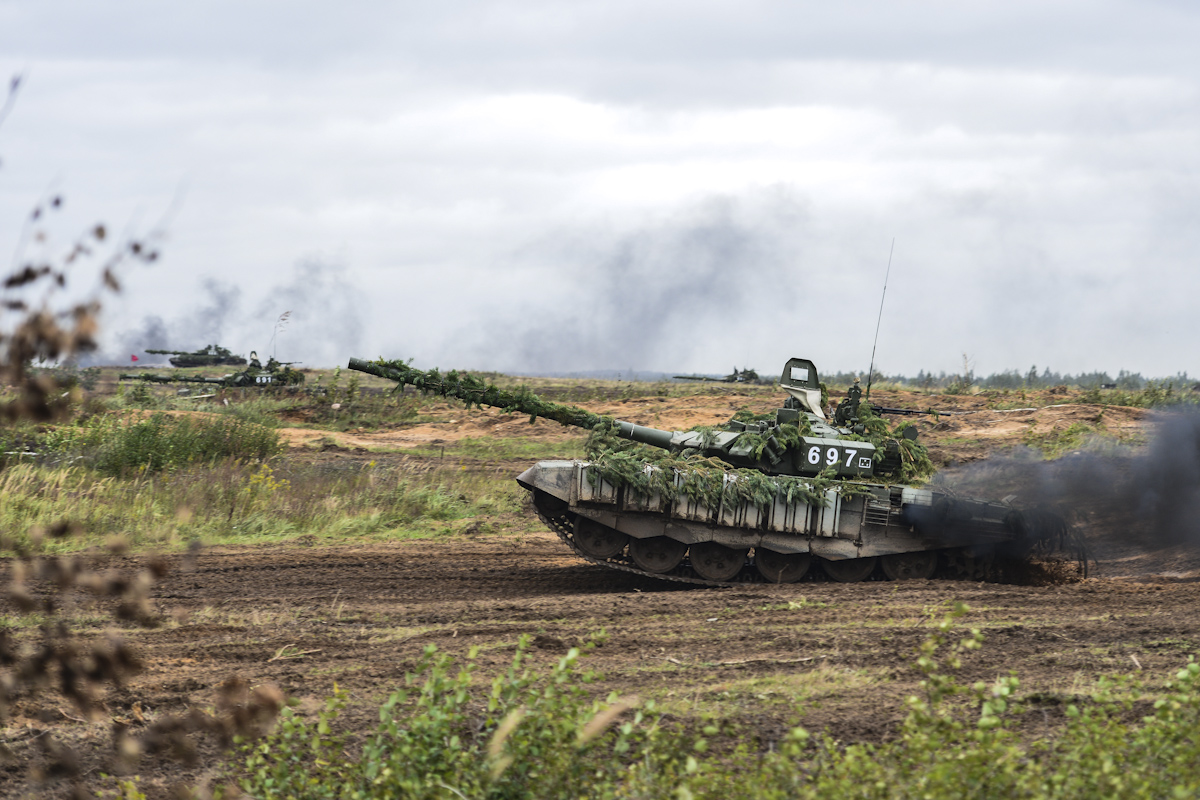 Source: Wikimedia Commons
Source: Wikimedia CommonsEast of the flank
On September 27, 2018, Belarusian Foreign Ministry spokesman Anatoly Glaz commended on the joint offer by Polish and U.S. Presidents, stating that “a U.S. base will not contribute to a strengthening of the regional stability.” Comparable reactions were expressed by other Belarusian officials and Russia’s Ambassador to Minsk. Yet Belarus’s anxiety is triggered by completely different reasons than those of Moscow. In fact, the Russians seem to suggest that they are ready to establish their own military facilities much quicker if the United States builds its base in Poland. Furthermore, Russia already revealed its potential location considered as the most convenient one for the Kremlin. Naturally, it is about Belarus while the state has long opposed Moscow’s pressures to set up a Russian military base on its soil.
Belarus currently hosts two active military facilities, including the Communications Center of the Russian Navy situated west of the town of Vileyka and the Hantsavichy Radar Station near the town of Baranovichi located in western part of the country. Such recent events such as Moscow’s annexation of Crimea, the actual war with Ukraine and the ever-growing tensions between Russia and Western countries made a Russian air base in Belarus a top priority. Yet Belarusian President Alexander Lukashenko does not intend to risk any further confrontation with the West. Thus it does not come as a surprise that Russia does not conceal its annoyance, accusing Belarus of not being loyal enough. Back in 2015, Russia did its best efforts to deploy an air force base in Belarus through the plan failed to be implemented due to Minsk’s resistance.
The Belarusian leader fears that the U.S. military presence near the country’s border will weaken his position in talks with the Russian side while bolstering the Kremlin’s pressure to deploy significant Russian military forces to Belarus. Installing a permanent U.S. base on Polish soil will provide the Russian officials with yet another argument to demand Lukashenko to fulfill allied commitments while depriving the Belarusian President of some of the claims against Russian military facilities. Interestingly, Moscow has already prepared the ground for the undertaking, for instance by appointing a new ambassador to Minsk, a former KGB officer sent by President Putin to all countries where it is absolutely necessary to act in both firm and decisive manner. Lukashenko said at the Munich Security Conference’s Core Group Meeting on October 31, 2018, whether “politicians in Poland say they are willing to spend billions of dollars to deploy U.S. weapons there and create a certain Fort Trump there, we are of course not fools and together with our key ally [Russia] we are thinking about how we could counter all that.” The Belarusian leader assured that Poland’s fears of an attack from the East are highly unjustified as his country “will never attack Poland so it is not necessary to set up excessive bases.”
Yet no constant for the Russian base has been granted while Lukashenko is clearly doing his utmost to play on time, hoping that stronger rhetorics towards the West will be enough to ensure Moscow about Minsk’s loyalty. On November 6, the Belarusian President met with a group of U.S. security experts, including General Benjamin Hodges and Michael Carpenter, a former foreign policy adviser to Vice President Joe Biden. During the talks, Lukashenko stated that his country “has no intent to deploy a Russian military base because it is not needed here” while warning against the need to dispatch more effective weapons, including missiles, if NATO seeks to implement its deterrence strategy, deploying military bases to Poland. This may suggest that Minsk is currently trying to strike a deal with Moscow, agreeing to install an Iskander missile unit while objecting a permanent military base. Regardless of Lukashenko’s various maneuvers in foreign policy and the plan to distance from Russia’s aggressive strategies, Belarus’ position vis-à-vis its eastern neighbour keeps weakening every year. It is mostly due to economic reasons. As a result, regardless of the project implementation, Lukashenko will be given an ultimatum to either set up a Russian military headquarters, thus limiting the state’s sovereignty, or to agree to be deprived of Russia’s financial aid to the Belarusian economy. The latter scenario may possibly result in a massive financial crisis in Minsk, which might be followed up by a controlled revolution that would put a new president to the power: fully loyal to Russia, yet not referred to as a dictator.
The Russians are currently trying to frighten both their Belarussian ally and Ukrainian enemy with the U.S. base in Poland. According to such a narrative, it would strengthen Poland’s regional position, providing the country with the U.S. political and military support, which would deprive Ukraine of any aids, thus making it a potential victim of a potential Warsaw’s territorial expansionism. It is about the alleged annexation of the territories of Western Ukraine. Naturally, such claims are absurd as Poland has never expressed similar temptations while the U.S. base on Polish soil may positively contribute to the intensification of the Polish-Ukrainian military partnership. The more powerful NATO’s eastern flank is, the stronger Ukraine’s defensive position against the Russian invasion may eventually become. In this context, it should also be added that the potential Russian base in Belarus, emerged as a direct result of U.S. permanent presence in Poland, does not introduce any changes to the very strategic position of Ukraine neither will it require to shift part of the Ukrainian troops to the north. Still, if Russia sought to attack Ukraine from the north, thus entering the Belarusian territory, it would not need any base to achieve its military goals, as illustrated by the war scenarios dating back to 2014.
A permanent U.S. base in Poland would be of great importance for the region whilst the current phase of the project’s implementation may indicate that the military facilities would perform a stabilizing function, without any need to destabilize the situation in Central and Eastern Europe. When assessing the possible military and political consequences of the creation of a permanent U.S. base in Poland, it should be noted that this would strengthen all countries potentially threatened with Russian aggression. Already at the Cold War period, U.S. bases in Germany aimed to protect Europe’s free part from Soviet expansion. After many years, such a move is believed to have safeguarded peace on the Old Continent. Today, a reinforced US military presence moved further to the east (for instance, in the form of the permanent base) will translate into defending an even greater part of Europe against war and enslavement.
[1] http://mon.gov.pl/aktualnosci/artykul/najnowsze/polacy-popieraja-stala-obecnosc-wojsk-usa-w-naszym-kraju-82018-10-27/
[2] https://www.stripes.com/news/poll-42-of-germans-want-us-troops-out-of-country-1.537230
[3] https://www.congress.gov/bill/115th-congress/house-bill/5515/text
[4] https://obamawhitehouse.archives.gov/the-press-office/2014/06/03/fact-sheet-european-reassurance-initiative-and-other-us-efforts-support-
US Basing in Poland and NATO’s Mobility Challenge
Glen E. Howard – President, Jamestown Foundation, USA
 Source: NATO
Source: NATOThe center of gravity of NATO has been steadily moving eastward since the end of the Cold War, assuming greater intensity following the invasion of Crimea in February 2014. Poland plays a central role in NATO’s deterrence strategy in the East, first and foremost due to its proximity to the theater of potential conflict in the Baltic.
The United States has a major dilemma in its defense strategy in Europe through the small size of its Europe-based conventional forces. At the height of the Cold War, the United States disposed of over 350,000 ground forces based in Germany alone defending the Fulda Gap. Today Washington has only 50,000 men total defending a potential battlefront that extends from the Arctic to the Black Sea as NATO struggles to develop a deterrence strategy utilizing a small number of American forces.
Not since the age of Bismarck has a European leader emerged with a willingness to use limited war as part of its strategy. Russian President Vladimir Putin is that person and, by utilizing the Russian concept of hybrid-war or non-linear war, he has become the Master of Limited War in the post-Soviet space, fighting four different wars to mark Russia’s reemergence in Europe as an irredentist power. All four of these wars have been fought since Putin came to power, first with the second Russo-Chechen war in 1999, the Russian invasion of Georgia in 2008 followed by the Russian attack and annexation of Crimea in February 2014 and its incursion into eastern Ukraine in August 2014. They all have one thing in common: Russian war-fighting strategy is to first invade, occupy, pause and then engage in endless international negotiations over the future of these regions only to later annex the regions with no ultimate conclusive results.
Following the path of Bismarck, Putin is eagerly redrawing the borders of the post-Soviet space and changing the regional balance of power. Facing off against this threat NATO strategy is at a crossroads. It has a major mobility problem with most of the U.S. forces based in Germany and the potential theaters of conflict stretching thousands of miles from the Baltic and the Black Sea region. Berlin offers the best transportation infrastructure in Europe for American forces to transit to different parts of Europe but it has encountered numerous problems in putting its train car capacity at the disposal of NATO in a timely manner. Delays in finding railcars for transporting American armor have caused some stoppages, as when U.S. forces returning from an exercise in Georgia had to wait for four months in Germany without their equipment. Their Stryker’s vehicles used in the exercise sat in Bulgaria while U.S. troops waited on the rail car capacity to transport their armored equipment back to Germany.
Transportation bottlenecks like this and EU regulations inhibit the time available for American forces to be deployed to potential forward frontline positions. Some officials, like former Commanding General U.S. Army forces Europe, retired Lt. General Ben Hodges have called for the creation of a Schengen system for NATO that would allow American forces to be transferred throughout Europe without the requirement of having a Schengen visa. This problem undermines NATO’s ability to react to a crisis. To correct the problem of NATO readiness, former U.S. Secretary of Defense James Mattis has requested the Alliance to create the 30-30-30-30 plan, also known as the four 30s concept whereby NATO can have 30 land battalions, 30 aircraft squadrons, and 30 warships capable of deployment within 30 days. The forces would be drawn from NATO units and could rush to the aid of any NATO ally. The Alliance on paper is supposed to have a 5,000 person NATO Response Force (NRF) that is assumed to be ready for deployment while many experts believe that the Mattis 30-30-30 concept demonstrates that the NRF is actually not combat ready for deployment at all.
Facing both military mobility and a readiness challenge, NATO has no other option than to move its forces closer to the actual theater of military operations to face the Russian threat. The debate is not about a U.S. military base in Poland but instead is about forward deployment and having NATOs military forces closer. Russia alone has over 200,000 servicemen based in the Western Military District and the Russian air base at Pskov, home to the 76th Air Assault Division, the same unit that led the invasion of Crimea in February 2014, and 35 years before also spearheaded the Soviet invasion of Afghanistan in 1979. In Poland the United States already has about 4,000 men operating throughout the country, but these forces are not enough to deter Russian capabilities in the region. The Polish army is already one of the largest ground forces and has one of the most modern armies in Europe, with more German-made Leopard 2 tanks in its armored formations than there are in the German Bundeswehr. The country also has one of the most modern air forces in Europe with nearly 50 modern F-16 fighters. It also plans to increase the number of new aircraft in the coming years.
In light of these developments, NATO’s center of gravity is moving deeper into East Central Europe. Previously former Secretary of Defense Donald Rumsfeld described NATO as consisting of the old Europe and new Europe in terms of their willingness to deter Russian aggression. What he failed to note is that this geographic distinction in NATO also exists in terms of NATO’s war-fighting capabilities as a military alliance. Russia’s recent attacks on Ukrainian naval vessels in the Black Sea near the Kerch Straits last November demonstrates the tyranny of distance in terms of how far overstretched NATO is in meeting any future challenge from the east. It also underscores the U.S. challenge for mobility in NATO to be able to deter further Russian aggression along the Baltic-Pontic axis, or what Polish geo-politicians call the Intermarium or more recently Three Seas initiative.
The idea that the threat NATO faces is not in the traditional arena of conflict in Western Europe, as it was during the days of the Fulda Gap, is now being overshadowed by the places like the Suwalki gap or even in places like Bessarabia and Donbas. What the debate over new U.S. military base confirms is that NATO lacks a new basing structure for the 21st century to deal with a revanchist Russia. A U.S. base in Poland would help further that goal as Washington seeks to monetize its security by getting other nations to pay for the costs of hosting American bases. Poland’s offer of $2 billion annually to receive a U.S. base, potentially named Fort Trump, is could be the answer to resolving the issue of mobility. It would allow NATO to have a force structure that is more forward deployed and closer to the threat posed by the Russian challenge in the East.
Relocating the alliance basing structure further east is not a zero-sum game for Germany or Poland. It is a question about mobility and whether NATO can meet the challenges posed by Russia. Retaining military facilities in central Poland gives the United States and NATO the ability to defend the Baltics by moving forces closer to the theater to defend geographic chokepoints like the Suwalki gap or rapidly reinforce the Baltic states should resort Moscow to a limited war and seize a slice of territory, like Narva in Estonia or the Russian populated Letgale region of Latvia. Basing in Poland also gives NATO and American forces ease of mobility in reacting to a conflict in the Black Sea as well. There are two anchors of NATO in the East – Poland and Romania. Having a military base in Poland provides one of those anchors and should be followed by a NATO infrastructure enhancement with Romania to improve the Baltic-Pontic axis and secure the other anchor. Bases in Poland would also eliminate transportation bottlenecks by moving forces closer to the frontlines and possibly consider making the eastern European rail hub of Lviv, a key component of the new NATO mobility structure as a part of this new NATO strategic axis. For this reason, American and European strategists should understand that the issue of U.S. basing in Poland is more a question about enhancing NATOin East Central Europe than it is about Fort Trump as a fixed military base for U.S. forces in Poland. Instead, Fort Trump should be viewed as the new strategic anchor for deterring Russian power in the East.
Permanent U.S. Base: Strengthening NATO‘s Defensive Potential on its Eastern Flank
Laurynas Kasčiūnas – MP, National Security and Defense Committee, Lithuania
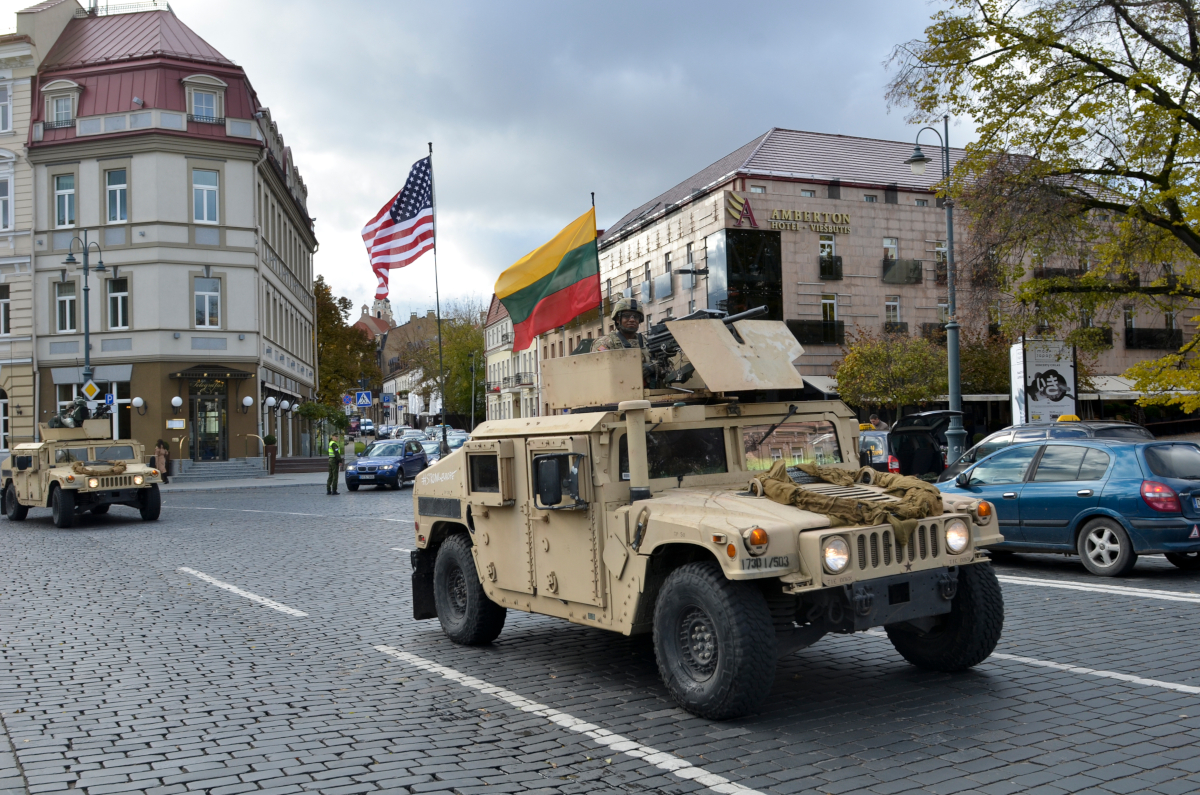 Source: U.S. Army
Source: U.S. ArmySince the beginning of Russia’s military aggression against Ukraine and annexation of Crimea in 2014, both geopolitical and security situation remains unchanged. Russia keeps developing its intensive militarization on NATO’s eastern borders by deploying tactical nuclear-capable “Iskander -M” missiles of a range up to 500 km. Moreover, Moscow enhances anti-access area denial (A2/AD) capabilities in Kaliningrad while practicing military scenarios against the West, even by using the Belarusian territory for such purposes. The wide-scale offensive drills “Zapad 2017”, which took place in the fall of 2017, recalled possible aggression plans against the Baltic States and revealed Russia’s readiness for further confrontation. Russia’s aggressive and unpredictable behavior poses a real threat to the security of the region and whole Europe.
Given all the reasons above, the Alliance needs NATO to respond adequately to the emerging threats while strengthening its military readiness, defense, and deterrence capabilities. For many years NATO military forces were fielded mostly in Western and Southern Europe, thus according to the outdated Cold War logic. And yet the main conventional threat to the security of the Alliance comes from the East. Russia is capable of launching combat operations in our region in less than 48 hours, as its armed forces are able to generate tens of battalion groups against us within a few days. Therefore, NATO forces and heavy equipment need to be geographically relocated accordingly.
A whole range of specific and long-term military collective defense measures has been implemented over the last two years. Among them is a multinational allied battalion, led by the United States, Germany, the United Kingdom and Canada, deployed to all Baltic States and Poland. They also include a brigade-sized military unit of heavy military equipment that was deployed in Poland to ensure rapid arrival of reinforcement in any country of the region if needed. Allies are committed to facilitating and speeding up military mobility procedures based on both NATO and EU standards. In such a manner, these measures made it possible for us to move from reassurance concept to deterrence.
Russian President Vladimir Putin is a rational actor who counts the costs and benefits. But at the same time, Kremlin is willing to pay a quite high price to achieve its geopolitical aims. Having this in mind, Poland’s pitch for the U.S. to build a permanent military base in that country would significantly increase deterrence against Russia that continues its aggressive policy while providing Poland and other NATO members in Central and Eastern Europe with essential additional guarantees. The U.S. troops would gain a very important position in responding to the situation, both in the region and beyond. This could stimulate synchronization of U.S. and EU activities, which could be improved thanks to the use of infrastructure in Europe, a solution considered as crucial from the military point of view.
Having deployed military forces in Poland permanently, the U.S. could substantially boost its military interaction with Poland at the level of both troops and military units while offering a possibility to take advantage of NATO’s most advanced weapon systems.
The permanent U.S. military presence would give a unique opportunity to develop common training process and exercises, perceived as a partnership between units. But in this case, it is very important that U.S. troops from such a base would not limit their presence to Poland’s territory exclusively and rotate across the three Baltic States instead, especially given their fruitful cooperation with U.S. Army and NATO forces during joint drills over the last few years. Moreover, the movement of allied troops between Poland and Lithuania would undoubtedly bolster the security of the Suwalki corridor, a place where many weaknesses in NATO’s strategy and force seem to converge. In the event of a conflict between Russia and NATO, Russia’s military, which operates from the Kaliningrad exclave and Belarus, could attempt to close the Suwalki Corridor, thus making it impossible for the Alliance as to guarantee security in the Baltic States. It is so important to deploy U.S. forces to the eastern part of Poland to ensure that reinforcement units could reach each of the countries more rapidly.
Thus and so, the permanent presence of the U.S. Army would reinforce the security of all NATO’s eastern flank even more. Lithuania would also welcome U.S. leadership in ensuring regional air defense and joint decisions in response to the military capacities in Kaliningrad, which are able to restrict the freedom of maneuver of NATO forces. Finally, it needs to consider that the permanent U.S. base in Poland would be the first yet not the last step in the deterrence process. This would send a clear message to our allies about America’s unwavering commitment to the region.
U.S. permanent military base in Poland: Added Value for Defense and Deterrence on NATO’s Eastern Flank
Iulian Chifu – President, Conflict Prevention and Early Warning Center, Romania
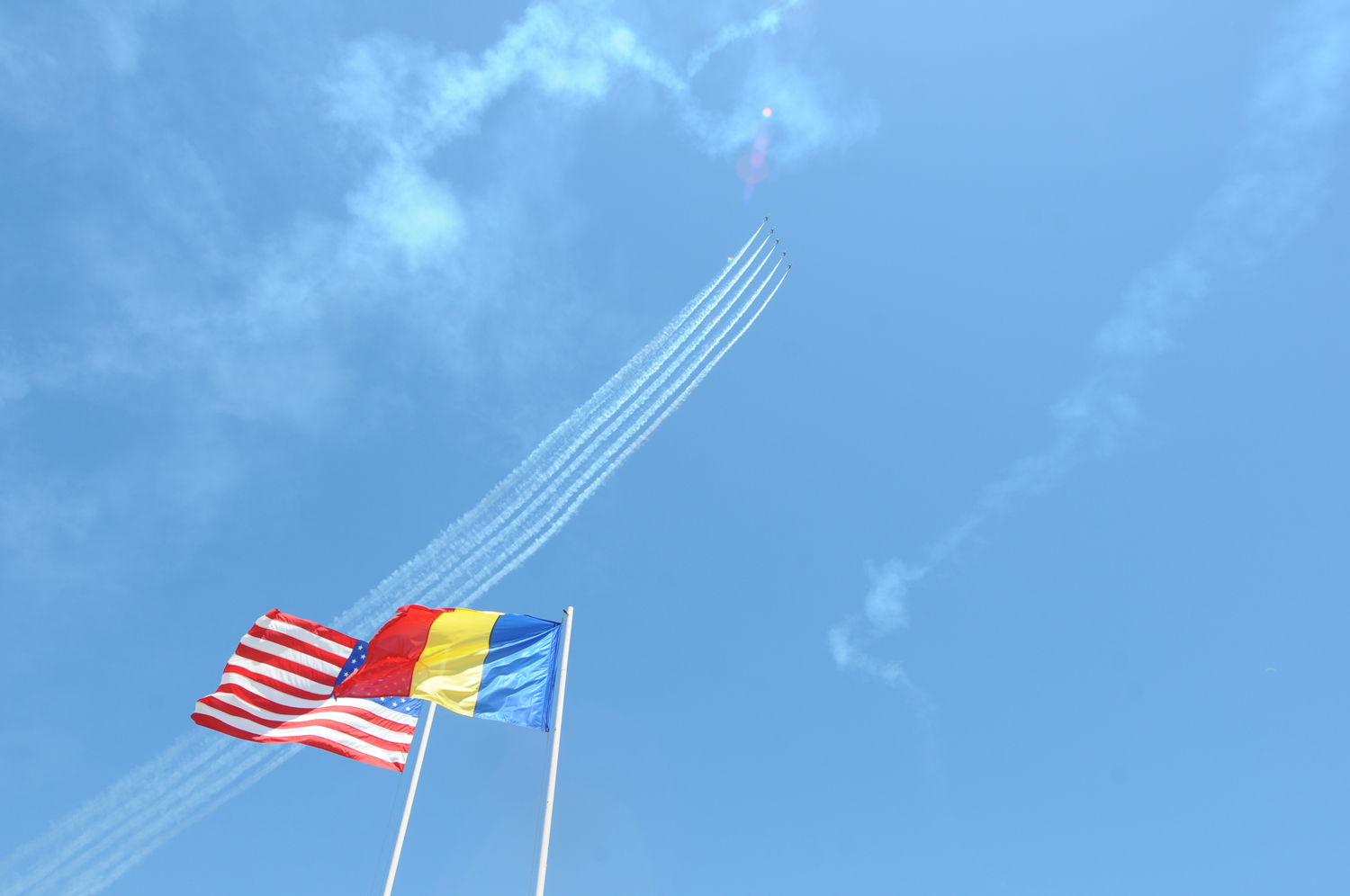 U.S. Embassy Romania
U.S. Embassy RomaniaOnce constructed, the U.S. army base in Poland will endeavor to add value to the “defense and deter” process both on the Eastern Flank of NATO and the EU. It is an expression of a sovereign decision that had been made by Poland to ensure its security and defense, a step undertaken according to the country’s own choices that was neither limited by nor subjected to the interference of any third countries. Poland freely accepted to strengthen its defense capacity through the permanent presence of U.S. contingent on its territory. This is to take place in line with Warsaw’s strategy and planning, both of which refer to the existing threat assessments.
From the point of view of NATO, Polish and US membership in the alliance, as well as a perspective of reinforcing defense on the Eastern Flank, U.S. troops constitute an added value to the defense and deterrence in the region. They embody the principle of common and equal defense of the Alliance’s all member states, not to mention the non-interference of third countries in NATO’s internal affairs. In addition, the U.S. army presence reinforces and complies with the principle, under which allied troops are allowed to move freely within the Alliance’s territory. This is the only guarantee of mobility and ability to intervene in due time all where NATO’s Article 5 shall apply.
For historical reasons, the U.S. presence in Europe is a must, as jointly stated by the North Atlantic Alliance, the United States itself and, more importantly, countries on NATO’s eastern flank. The two World Wars, both of which broke out in the Old Continent, have confirmed that European powers need a balance and presence of a third country in order to ensure their partners, both significant, and the smaller ones, that peace will prevail in Europe while preventing another war from happening. Establishing permanent military facilities instead of deploying rotational forces is a step forward in fielding U.S. troops in Europe. Furthermore, such a decision flashes deterrence signal to Russian forces, proving that neither will U.S soldiers retreat from Europe nor will Washington withdraw from defending eastern part of the continent.
Also, apart from being a good guarantee, America’s permanent military bases on NATO’s eastern flank comes as an argument in favor of the seriousness and determination to react in all cases where there emerge new threats, aggressive actions or militarization processes aimed at exerting pressure on regional allies. Russia’s oppressive steps will result both in sanctions and expenses for its military and strategic stance, as exemplified by costs of deploying permanent forces on the Alliance’s eastern flank. Moreover, it gives a sign that each example of Russian aggression will be punished by NATO’s new forces and their on-ground military capabilities.
The level of this permanent military presence (a brigade) is a balanced and proportional response to the aggression in Ukraine and non-observance of the basic principles of the 1997 NATO-Russia Founding Act. But, first and foremost, it is about the change of borders that takes place through military aggression, as it happened in August 2008 in Georgia and February-March 2014 in Ukraine. It offsets neither the militarization of Kaliningrad nor the Russian military presence at its Western Borders while the same may be said about provocations all over the eastern flank, from the Grand North to the Eastern Mediterranean Sea. It does not change or rebalance dramatically the number of troops, sending a signal of international interest and common defense as soon as Moscow takes another step.
Romania will always look into the North-South cooperation on NATO’s eastern flank, especially that with Poland as our strategic partner, within the framework of the trilateral agreement with Poland and Turkey or the Bucharest Nine group, a platform that unites the Alliance’s easternmost states. In case of crisis, the nation-state, which is an allied country altogether with military forces stationed on its territory at the moment of the crisis, shall come as a first responder. They should be subsequently backed by the neighbor states and the allies all over the region.
Romania requires to see a balance between commitments in northern and southern tiers of eastern flank so that any reinforcement of the former would be followed by support of both defense and deterrence on the latter. Moreover, as seen firsthand, exercises like Zapad are planned and designed specifically for the northern flank. Nonetheless, military maneuvers, ranging from Georgia to Crimea, Luhansk and Donetsk, happen to take place on the south. The excessive militarization of Crimea and the level of capabilities present at 340 miles from Romanian-NATO shores of the Black Sea seem to prove a considerable military threat that Russia poses to NATO’s southernmost countries on the eastern flank.
Romania’s experience with the U.S. and allied presence, as evidenced by such military installations as the Mihail Kogalniceanu air base (a joint Romanian-American facility), the Bucharest Air Base 90 Otopeni as well as those in Deveselu, Câmpia Turzii, Fetești, and Timișoara are good examples of success and excellent cooperation, both of which encourage further assistance in this domain. If U.S. permanent presence adds value to such issues as joint training exercises of special forces, military planning, measures against hybrid threats and warfare conform to standards of the 21st century, it will then enhance Europe’s defense and deterrence against both state and non-state actors that could test the Alliance’s unity and determination to invoke Article 5 to defend an Eastern European country, NATO’s most recent member.
About the Authors
Grzegorz Kuczyński – Director of Eurasia Program, Warsaw Institute, Poland
Grzegorz Kuczyński graduated in history from the University of Bialystok and East European studies from the University of Warsaw. As an expert in East European issues, he worked for many years as a journalist and analyst. Author of many books and publications on Russia’s domestic matters.
Krzysztof Kamiński – President, Warsaw Institute, Poland
Krzysztof Kamiński graduated from the University of Warsaw (Faculty of Internal Security) and completed the course in the Institute of World Politics in Washington, DC. He gained professional experience in the energy sector.
Glen E. Howard – President, Jamestown Foundation, USA
Glen E. Howard is a regional expert on the Caucasus and Central Asia. He was formerly an Analyst at the Science Applications International Corporation (SAIC) Strategic Assessment Center. His articles were published in The Wall Street Journal, the Central Asia-Caucasus Analyst and Jane’s Defense Weekly. Mr. Howard has served as a consultant to the private sector and governmental agencies, including the U.S. Department of Defense, the National Intelligence Council and major oil companies operating in Central Asia and the Middle East.
Laurynas Kasčiūnas – Member of Parliament, Lithuania
Laurynas Kasčiūnas is a Lithuanian MP and a member of the National Security and Defence Committee. He previously served as Director of the Eastern Europe Studies Centre (2012–2016).
Iulian Chifu – President of the Conflict Prevention and Early Warning Center, Romania
Iulian Chifu is a professor at the National School for Political and Administrative Studies in Bucharest. He is a former Strategic Affairs, Security and Foreign Policy Advisor to Romanian President (2011-2014).
The publication of the Special Report was co-financed from the funds of the Civic Initiatives Fund Program 2018.
Selected activities of our institution are supported in cooperation with The National Freedom Institute – Centre for Civil Society Development.
All texts published by the Warsaw Institute Foundation may be disseminated on the condition that their origin is credited. Images may not be used without permission.






